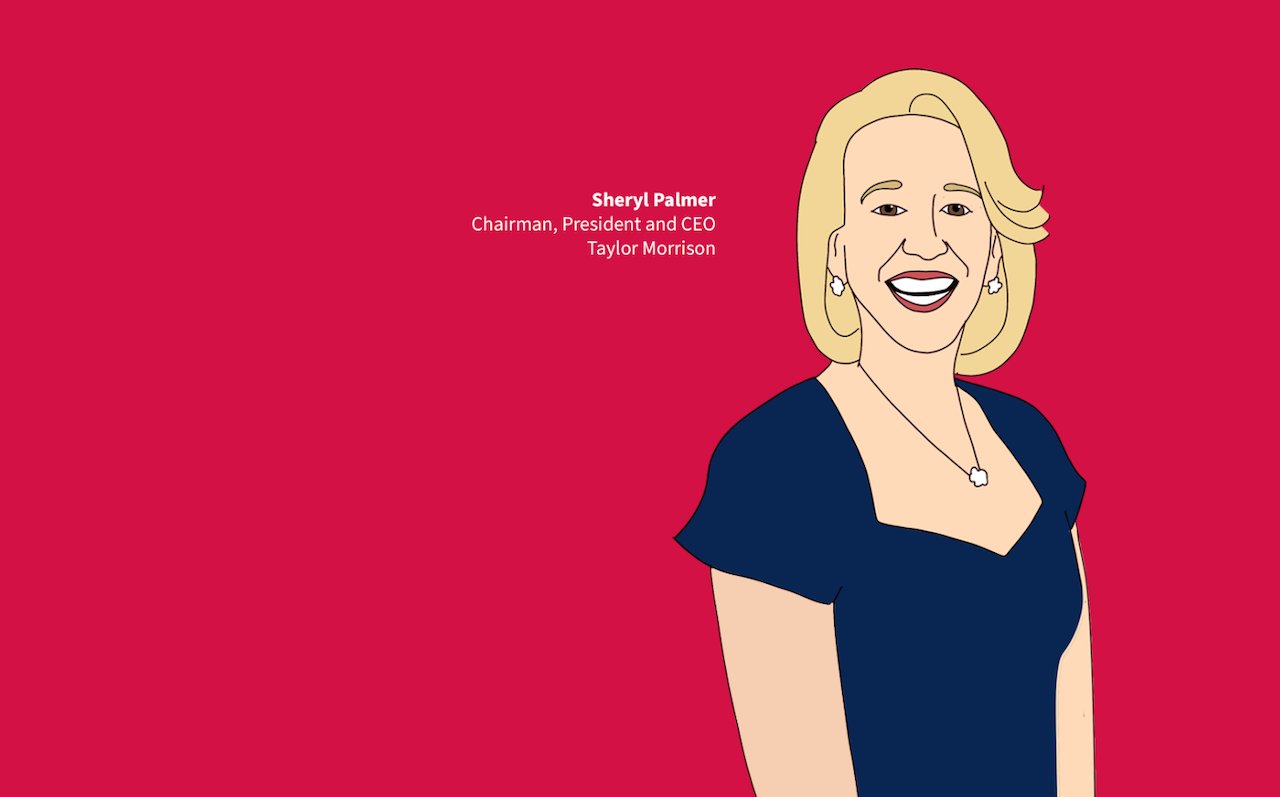Leadership
Taylor Morrison’s Dual-Track Discipline Is Paying Off
In a stop-and-start housing market, the builder balances affordability-driven pace with margin protection through segmentation, land discipline, and cost control.

In a quarter where even the strongest builders have been forced to choose between price and pace, Taylor Morrison chose both—carefully.
The company’s third-quarter 2025 results offer a case study in how to navigate a patchwork housing market by leaning on segmentation, not slogans. Rather than swing entirely toward incentives or hunker down solely to defend margin, Taylor Morrison charted a hybrid course: accelerating sales where affordability pressures bite hardest, and guarding value where confidence still closes the sale.
A Market That Demands Two Speeds
Across much of the U.S., new-home demand remains uneven — solid in pockets, uncertain in others, sluggish in yet others. Mortgage-rate volatility, inflation fatigue, and buyer hesitation continue to make forecasting a tightrope act. Public homebuilders, from Lennar to D.R. Horton to PulteGroup, are all adjusting to the same consumer math: affordability is the obstacle, confidence the currency.
Where Horton leans on scale and Lennar on its even-flow machine, Taylor Morrison has leaned into differentiation — by buyer segment, geography, and land strategy. CEO Sheryl Palmer framed the quarter’s performance through this lens of calibration:
Driven by our diversified portfolio and our team's careful calibration of pricing and pace across our well-located communities, we once again met or exceeded our guidance on all key metrics, including home closings volume, price and gross margin.”
That blend of calibration and control — essentially, engineering elasticity where demand exists and patience where it pays — defined the tone of the call.
Hybrid in Practice: One Playbook, Two Markets
Palmer described what she called “a balanced operating strategy” that allows Taylor Morrison to flex to conditions rather than react to them.
The ongoing execution of our balanced operating strategy has allowed us to maintain healthy performance even as we have adjusted pricing and incentives, particularly in entry-level price points,” she told analysts.
The company’s segmentation data shows a near-even split in emphasis: roughly one-third of orders coming from entry-level buyers, half from move-up, and the remainder from resort and 55-plus lifestyle communities. This mix gives the company the flexibility to move where the customer energy is—and to pause where it’s not.
In some communities,” Palmer said, “this results in a price-focused approach to drive volume, especially where we serve predominantly first-time buyers … however, in move-up and resort lifestyle communities, we are inclined to be more patient to protect values given our distinct locations and product offerings in hard-to-replace communities.”
That distinction — pace where the alternative can get costly fast, patience where prudent — is the hinge of the Taylor Morrison playbook.
Segmentation as Risk Management
Taylor Morrison’s approach looks less like an across-the-board pricing or incentives policy and more like a community-by-community field strategy. Each market operates within a defined customer profile and pricing lane.
Given our quality land locations,” Palmer said, “our sales strategies are driven community by community based on their unique selling proposition, competitive analysis and consumer profile.”
It’s a segmentation discipline that’s increasingly becoming a competitive advantage. While others chase one national pace strategy, Taylor Morrison’s “dual-track” model lets it respond to demand curves at different speeds without losing cohesion.
Executives made clear that this is not an abstract idea—it’s a living, operational rhythm.
We're going to continue to do the right thing, community by community, asset by asset,” Palmer said in response to an analyst question. “We really look at the balance of price and pace and consumer group in every community.”
For builders following the company’s model, this local-granular view is as much about managing risk as it is about maximizing return. Pricing and starts are tethered to absorption, not to projections or backlog pressure.
We’re going to align sales pretty close to starts,” Palmer added, emphasizing that permits are ready but “we’re not going to flood the market with inventory.”
Specs as a Bridge, Not a Strategy
If Taylor Morrison’s hybrid play has a physical manifestation, it’s in the spec-to-order mix.
Specs remain the company’s bridge to an affordability-strained buyer base, not a permanent structure.
“Specs will continue to bridge the gap between current buyer preferences for incentivized quick move-in inventory and an eventual return to more historic preferences for personalizing to-be-built homes, especially in our move-up and resort lifestyle communities,” Palmer said.
The ratio is deliberate: entry-level and townhome segments carry higher spec exposure to meet the quick-move buyer, while discretionary and lifestyle buyers are guided toward to-be-built homes where margins and personalization run higher.
Erik Heuser, the company’s chief corporate operations officer, summarized the segmentation logic cleanly:
Entry level is going to be more spec, townhomes are going to be more spec, and then as we move our way up in the consumer segmentation profile, we'll look to pursue more to-be-built business.”
It’s an operational lever that both sustains sales pace and protects brand equity.
The Mortgage as Product
Palmer was clear that affordability innovation goes beyond sticker price. The company’s finance arm is not just supporting transactions—it’s shaping them.
We're using both on the conventional and the FHA loans … buydowns, adjustable loans … and a new proprietary nine-month program for our to-be-built,” she explained. “It really gives our customers flexibility on a forward lock but the security of a longer period of time if they believe rates are going to drop.”
In today’s market, that kind of mortgage creativity functions as a second product line. It lets Taylor Morrison help buyers solve for payment rather than price — an increasingly decisive factor in conversion rates.
Cost, Cycle Time, and Land Discipline
Beneath the sales-strategy conversation, Taylor Morrison’s Q3 tone carried a quieter but equally important theme: discipline on land and cost.
While peers talk about renegotiating with suppliers and trimming stick-and-brick costs, Taylor Morrison focused on controlling what it owns — and increasingly, on what it doesn’t.
We control 60% of our lot supply via options and off-balance-sheet structures … as we have made significant progress in our asset-lighter strategy,” Heuser noted.
That asset-light posture isn’t new, but it’s become more valuable in a market where land sellers have been slow to reset expectations and carrying costs can quickly erode margin.
The company’s leaner land model gives it the agility to adjust to changing conditions without being trapped in overvalued positions.
Internally, operational efficiency continues to improve. Cycle-time reductions and supplier coordination remain priorities, with leadership pointing to shorter construction durations and stronger vendor relationships. The emphasis, as Palmer framed it, is pragmatic: control what you can, flex where you must, and keep the machine running lean.
Contrasts and Context
Placed alongside its largest peers, Taylor Morrison’s Q3 posture highlights how differentiated the national homebuilding landscape has become.
- Lennar remains the volume-first operator, using incentives and even-flow production to drive throughput.
- D.R. Horton wields scale as its shock absorber, converting volume into cost leverage.
- Pulte, the margin purist, tries to remain anchored in confidence-driven buyers and price discipline.
Taylor Morrison sits in between — a portfolio hybrid that can move in both directions depending on the submarket. It has enough reach into the entry-level and townhome space to benefit from demand elasticity, but enough exposure to 55+ and move-up product to maintain profitability when confidence, not price, closes the deal.
That balance makes it one of the few builders able to toggle between “pace mode” and “profit mode” without disjointing its operations.
The Discipline Behind the Dual Track
What makes Taylor Morrison’s hybrid strategy credible is not its segmentation alone, but its rigor. The company’s approach is underwritten by cost discipline, asset-light land management, and operational efficiency—three ingredients that keep flexibility from becoming fragility.
Palmer’s refrain of “balanced operating strategy” recurred throughout the call, culminating in her outlook statement:
We have well over 100 communities expected to open next year, resulting in mid- to high single-digit anticipated outlet growth.”
That growth, while modest, is intentional. It favors steady return on invested capital over headline-grabbing expansion. In that sense, Taylor Morrison’s hybrid navigation is less a tactical adjustment than a cultural one: an organization built for variability, not dependent on any single market outcome.
Takeaway: The Advantage of Optionality
For strategists across the industry, Taylor Morrison’s third-quarter results don’t simply mark another earnings beat—they illustrate the advantage of optionality.
The company’s dual pricing discipline—accelerating in price-sensitive submarkets while defending value among discretionary buyers—offers a roadmap for how to operate when market signals are conflicting and consumer psychology is fragmented.
In an environment where few builders can afford to play offense on both fronts, Taylor Morrison’s segmented, disciplined execution may be the most adaptive model in the field. The builder isn’t betting on one market—it’s preparing for both.
MORE IN Leadership
Century Communities’ Jim Francescon Bridges Legacy and Future
At Focus On Excellence, Century Communities’ next-gen leader explores how trust, tech, and team culture are shaping the builder of 2030.
The Digital Thread Is The Next Frontier For Homebuilders
At Focus On Excellence, homebuilding’s innovation vanguard demonstrates how system alignment, credible data, and cultural change can future-proof and spark accountability across all functions.
UHG Fallout: Board Exodus Follows Review Decision
A failed sale, a leadership standoff, and a mass board resignation leave United Homes Group exposed—at a critical moment of macro volatility.
